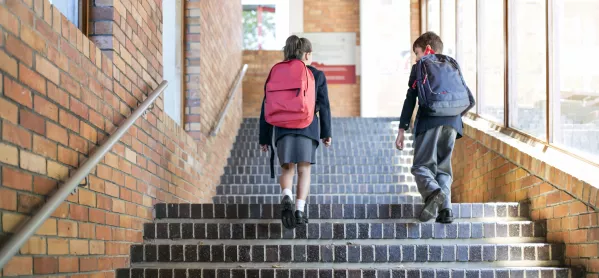The Independent Sage Committee has released its five recommendations to government for reopening schools safely and keeping them open.
In a briefing today, the group has made clear that opening schools should take priority and that the government needs to make “hard decisions” to ensure that the community transmission levels remain low.
Professor Stephen Reicher said: “What we open and in what order says something about our values and priorities as a society - it’s not for us to judge, it’s for the society to decide - and the question to some extent is: what’s more important, for a child to get an education or for the parents to get a drink?”
In full: Your guide to September’s back-to-school plan
Unions: Leaked DfE school opening plan ‘is an undoable fantasy’
News: Experts warn of school reopening ‘super-spreader’ risk
He continued: “We need to be clear about our priorities, the government needs to be clear about its priority.
“If children are not in education, it ruins their life chances across the lifespan.
“What is more, the evidence shows that nearly 70 per cent of students are getting daily interactive lessons, in state schools, that goes down to 10 per cent. So keeping schools closed not only is bad for children, it’s appalling in terms of equality in this country.
“That’s why we say that education is an absolute priority.”
The five steps the committee outlined to ensure schools can be opened safely and kept open are:
- Reduce the level of virus in the community - this means recognising the impact of reopening other places.
- Ensure the outbreaks in schools and their local communities are identified early and controlled rapidly. This requires a robust Find, Test, Trace, Isolation support infrastructure at the local level. “We don’t think we have this now with the centralised system, it’s a particular weakness” Dr Zubeida Haque commented.
- Produce detailed guidance based on case studies/real-life scenarios and substantial extra resources to ensure schools can minimise the spread of coronavirus. Guidance should include risk assessment for schools and staff, including for BME groups and schools in deprived areas which Dr Haque says are more at risk. She added: “When you look at the guidance for schools from government, it’s so vague! It uses terms like ‘where necessary’, there is no clear examples and real-life scenarios so that schools and parents and teachers can know exactly what the guidance says.”
- Leave no child behind: since lockdown has widened existing inequalities, and the government needs to ensure that in case there are further lockdowns, there are contingency plans, educationally, as well as provision for peer-to-peer, emotional and psychological support, particularly for schools in deprived areas.
- Government and local authorities should be taking steps to ensure they have better communication, engagement and consultation with headteachers, staff and parents, so that they can use policy and measures that take into account local circumstances as well.




